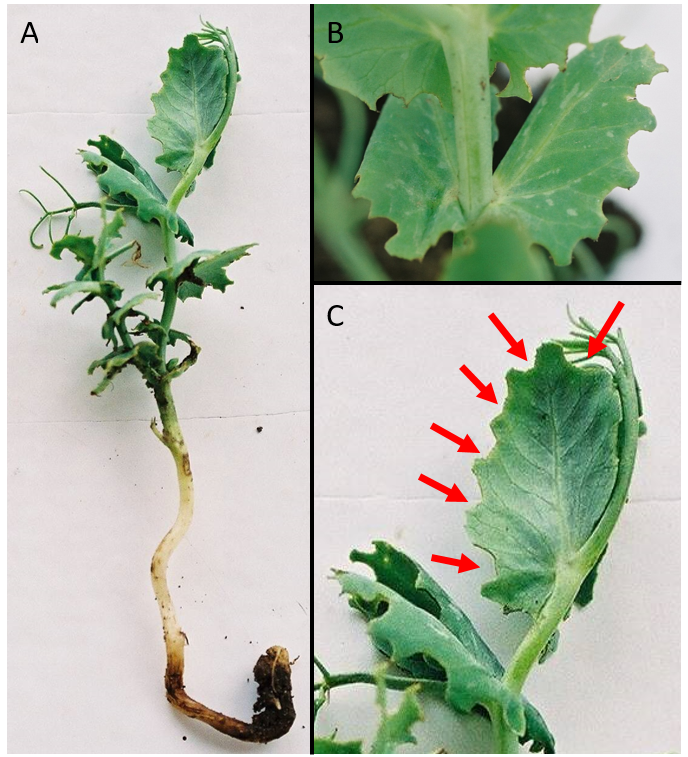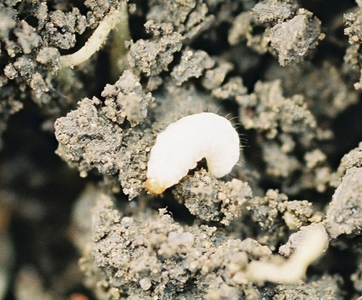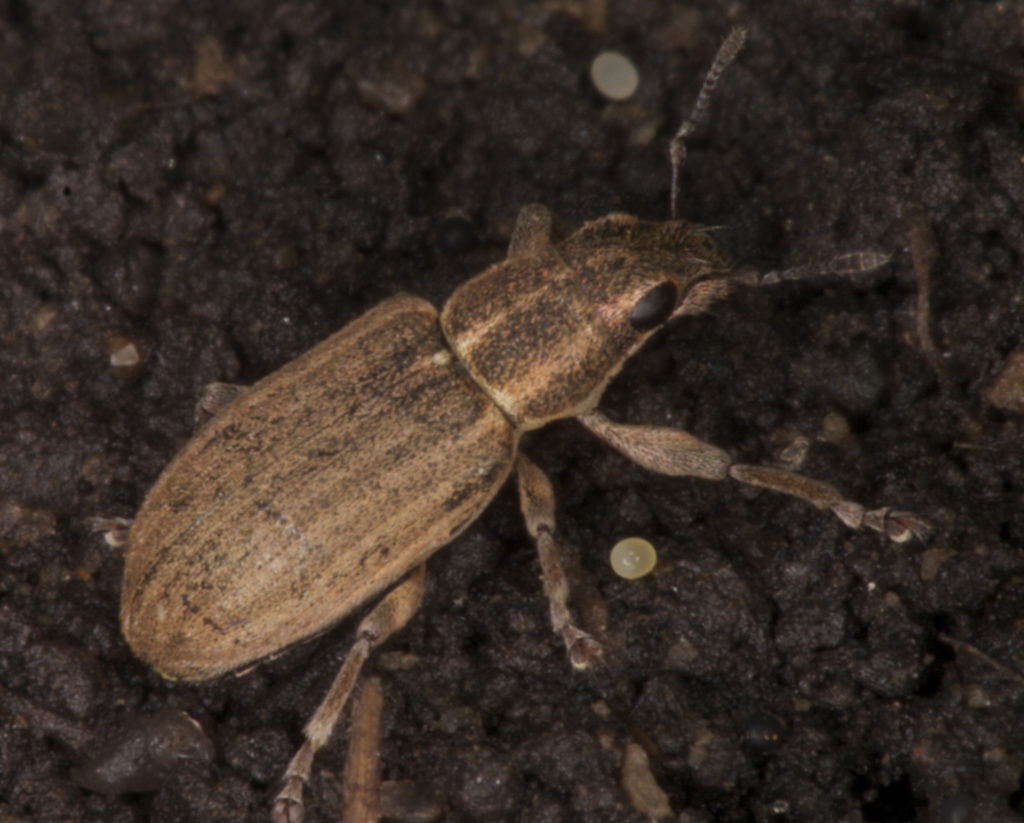The annual pea leaf weevil survey is underway! The survey is conducted by counting the characteristic ‘u’ shaped feeding notches made by adult pea leaf weevil at several locations along the field edge (Fig. 1).

All photos courtesy of Dr. L. Dosdall.
In the spring, overwintered adults disperse to feed upon the leaf margins and growing points of legume seedlings (alfalfa, clover, dry beans, faba beans, peas). This feeding can produce a characteristic, scalloped (or notched) edges (Fig. 2). Females lay their eggs in the soil either near or on developing pea or faba bean plants from May to June.

The annual pea leaf weevil survey is conducted from late May to early June. The survey is conducted by counting the characteristic ‘u’ shaped feeding notches made by adult pea leaf weevil at several locations along the field edge. Review the prairie-wide historical survey maps. Higher levels of feeding damage are correlated to higher pea leaf weevil densities so areas highlighted in Figure 3 warrant in-field monitoring in the spring of 2025.

Figure 3. Results of the annual pea leaf weevil survey conducted in the spring of 2024.
Biological and monitoring information related to pea leaf weevil in field crops is posted by the province of Alberta and in the PPMN monitoring protocol. Access the Pea leaf weevil information posted by the Manitoba Pulse & Soybean Growers, Saskatchewan Agriculture, Alberta Agriculture and Irrigation, or the Prairie Pest Monitoring Network. Also refer to the pea leaf weevil page within the “Field Crop and Forage Pests and their Natural Enemies in Western Canada: Identification and management field guide” (2018), accessible as a free downloadable PDF in either English or French on our Field Guides page.








